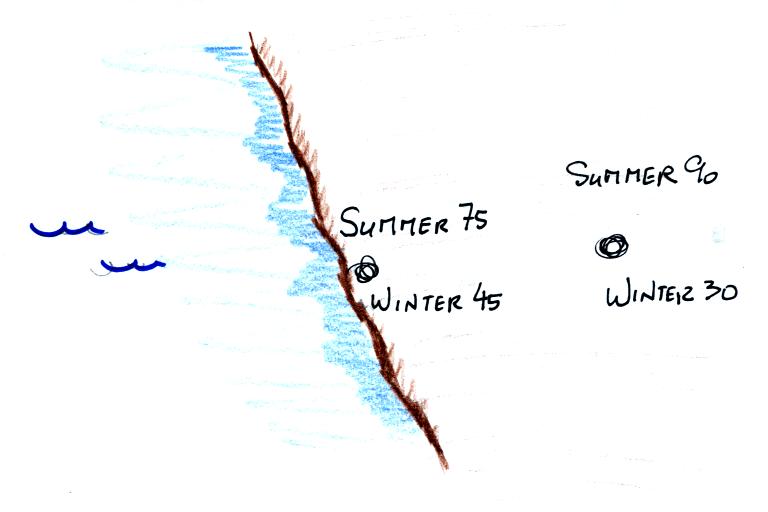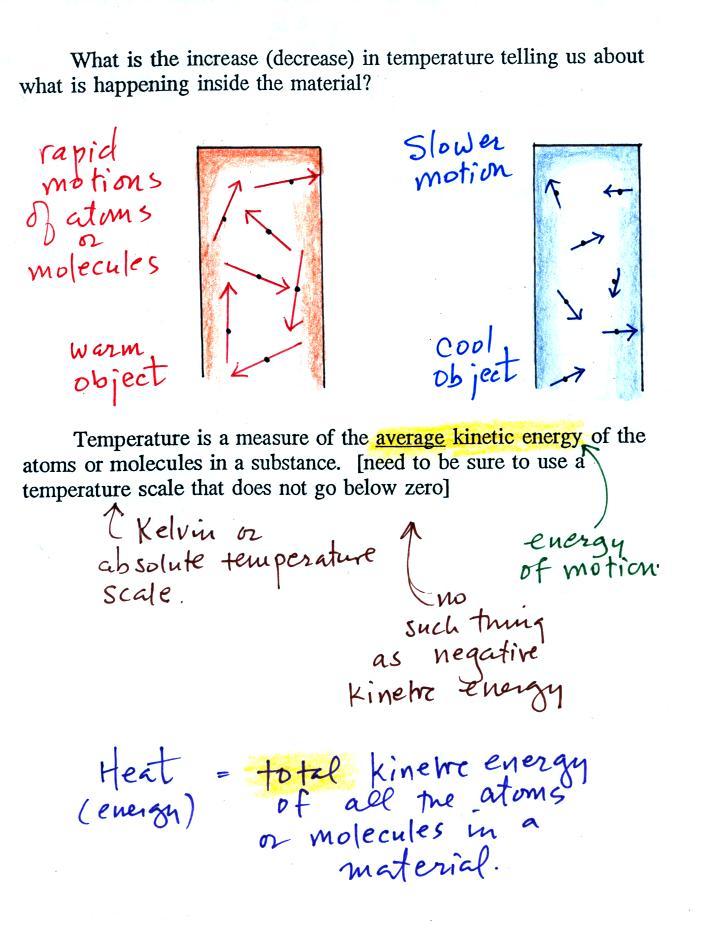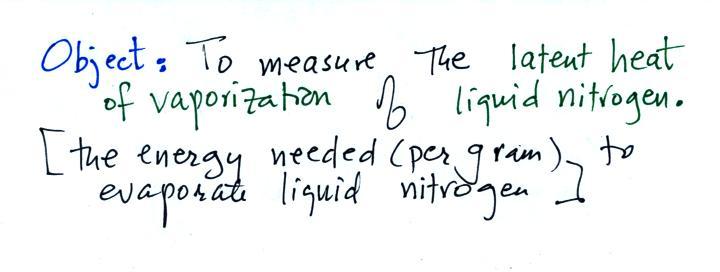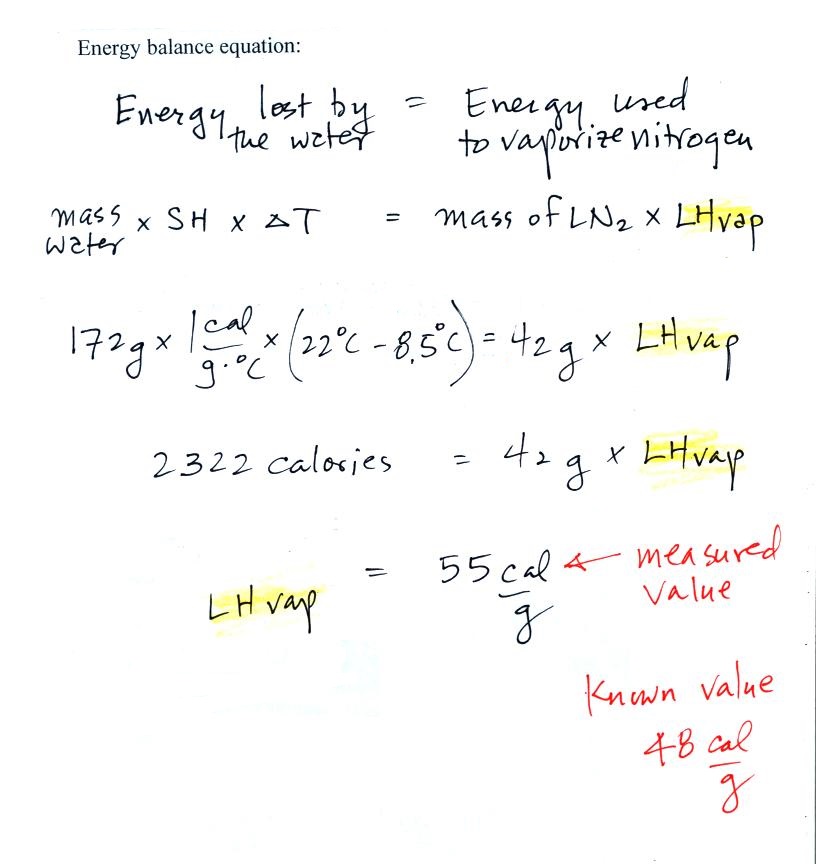Tue., Oct. 8, 2013
Some music from the Be Good
Tanyas before class this morning: "Ootischenia",
"Waiting
Around to Die", "For the
Turnstiles", "House of the
Rising Sun", "Reuben"
The 1S1P reports on both Radon have been graded and were
returned today. The Carbon Dioxide reports should be done
by Thursday. You should find something like is shown below
up near the top of your report.

The Surface Weather Map
Analysis Bonus 1S1P Assignment is due Thursday this
week. A new Optional
Assignment is also available and is due next
Tuesday. You can earn up to 0.5 pts of extra credit, if
you make an honest effort to answer all the questions, and a Green Card if you miss no more
than 3 pts on the assignment.
The first part of the Quiz #2 Study
Guide is now online. Quiz #2 is next week, Thursday
Oct. 17.
We're done with weather maps for the time being. Though
if interesting weather appears imminent I'll try to mention it
in class.
If we were using a textbook in this class we'd be moving into
Chapter 2! During the next couple of weeks we
will be concerned with energy, temperature, heat, energy
transport, and energy balance between the earth, atmosphere, and
space.
It is easy to lose sight of the main concepts because there
are so many details. The following is an introduction to
this new section of material and most of the figures are found
on pages 43 & 44 in the photocopied ClassNotes.
Types of energy
We will learn the names of
several different types or forms of energy.
Kinetic energy is energy of motion. Some examples (both
large and microscopic scale) are mentioned and sketched
above. This is a relatively easy to visualize and
understand form of energy.
Radiant energy is a very important form of energy that was
for some reason left off the original list in the ClassNotes
(pps 43&44). Electromagnetic radiation is
another name for radiant energy. Sunlight is an example of
radiant energy that we can see and feel (you feel warm when you
stand in sunlight). Everyone in the classroom is emitting
infrared light, an invisible form of radiant energy. And
actually the walls, ceiling, floor and even the air in the
classroom are emitting infrared light.

Latent heat energy is an under-appreciated
and rather confusing type of energy. The word latent refers to
energy that is hidden. That's part of the problem.
But it is also the fact that the energy is contained in water
vapor and water. That seems like an unlikely place for
energy to be found. The hidden energy
emerges when water vapor condenses or water freezes (the
energy had been added earlier when ice was melted or water was
evaporated).
We'll usually be using calories as units
of energy. 1 calorie is the energy need to warm 1 gram
of water 1 C.
Here's a little miscellaneous information that you don't
need to worry about remembering. You've probably seen
the caloric content of food on food packages or on menus in
restaurants. 1 food calorie is actually 1000 of the
calories mentioned above.

A 150 pound person would burn almost 500
calories while sleeping during the night (8 hours x 60
minutes per hour x 1 food calorie per minute). This is
about the energy contained in a donut.
Energy
transport
Four energy transport processes are listed below

By far the most important
process is at the bottom of the list above. Energy
transport in the form of electromagnetic radiation (sunlight for
example) is the only process that can transport energy through
empty space. Electromagnetic radiation travels both to the
earth (from the sun) and away from the earth back into
space. Electromagnetic radiation is also responsible for
about 80% of the energy transported between the
ground and atmosphere.
You might be surprised to learn that latent heat is the
second most important transport process.
Rising parcels of warm air and sinking parcels of cold air
are examples of free convection. Because of convection you
feel colder or a cold windy day than on a cold calm day (the
wind chill effect). Ocean currents are also an
example of convection. Ocean currents transport energy
from the warm tropics to colder polar regions.
Convection is a 3rd way of causing rising air motions in the
atmosphere (convergence into centers of low pressure and fronts
are two other ways we've encountered so far)
Conduction is the least important energy transport at least
in the atmosphere. Air is such a poor conductor of energy
that it is generally considered to be an insulator.
Energy balance and the atmospheric greenhouse effect
The next picture (the figure in the ClassNotes has been split
into three parts for improved clarity) shows energy being
transported from the sun to the earth in the form of
electromagnetic radiation.

We are aware of this energy
because we can see it (sunlight also contains invisible
forms of light) and feel it. With all of this energy
arriving at and being absorbed by the earth, what keeps
the earth from getting hotter and hotter? If you
park your car in the sun it will heat up. But there
is a limit to how hot it will get. Why is
that?
It might be helpful when
talking about energy balance to think of a bank
account. If you periodically deposit money into your
account why doesn't the balance just grow without
limit. The answer is that you also take money out of
the account and spend it. The same is true of energy
and the earth. The earth absorbs incoming sunlight
energy but also emits energy back into space (the orange
and pink arrows in the figure below). Energy is
emitted by both the surface of the earth and the
atmosphere.

Energy emitted in the form of infrared light is an invisible
form of energy (it is weak enough that we don't usually feel it
either). A balance between incoming and outgoing energy is
achieved and the earth's annual average temperature remains
constant.
We will also look closely at energy transport between the
earth's surface and the atmosphere (see the figure below). This
is where latent heat energy transport, convection and conduction
operate (they can't transport energy beyond the atmosphere and
into outer space).
That is also where the atmospheric greenhouse
functions. That will be a important goal - to better
understand how the atmospheric greenhouse effect works.

The greenhouse effect is getting a lot of "bad press". If
the earth's atmosphere didn't contain greenhouse gases and if
there weren't a greenhouse effect, the global annual average
surface temperature would be about 0 F (scratch out -4 F and put 0
F, it's easier to remember). Greenhouse gases raise this
average to about 60 F and make the earth a much more habitable
place. That is the beneficial side of the greenhouse
effect. That's mostly what we'll be concentrating on - how
can the greenhouse effect cause this warming, how can it produce
this much warming.
The detrimental side is that atmospheric greenhouse gas
concentrations are increasing (no real debate about that).
This might enhance or strengthen the greenhouse effect and cause
the earth to warm (some debate here particularly about how much
warming there might be). While that doesn't necessarily
sound bad it could have many unpleasant side effects (lots of
debate and uncertainty about this also). That's a subject
we'll explore later in the semester.
When you add energy to an object, the object will usually warm
up (or if you take energy from an object the object will
cool). It is relatively easy to come up with an equation
that allows you to figure out what the temperature change will be
(this is another equation I'll write on the board before the
next quiz if you ask me to - try to understand it, you don't have
to memorize it).
The temperature change, ΔT, will first depend on how much
energy was added, ΔE. This is a
direct proportionality, so ΔE is in the
numerator of the equation (ΔE and ΔT
are both positive when energy is added, negative when energy is
removed)
When you add equal amounts of energy to large and small
pans of water, the small pan will heat up more quickly. The
temperature change, ΔT, will depend on the
amount of water, the mass. A small mass will mean a large ΔT,
so mass should go in the denominator of the equation.
Specific heat is what we use to account for the fact that
different materials react differently when energy is added to
them. A material with a large specific heat will warm more
slowly than a material with a small specific heat. Specific
heat has the same kind of effect on ΔT as
mass. Specific heat is sometimes called "thermal mass" or
"thermal capacity." You can think of specific
heat as being thermal inertia - a substance with high specific
heat, lots of thermal inertia, will be reluctant to change
temperature.
Here's an important example that will show the effect of
specific heat (middle of p. 45).
Equal amounts of energy (500 calories, note that
calories are units of energy) are added to equal masses (100
grams) of water and soil. We use water and soil in the
example because most of the earth's surface is either ocean or
land. Before we do the calculation, try to guess which material
will warm up the most. Everything is the same except for the
specific heats. Will water with its 5 times larger specific
heat warm up more or less than the soil?
The details of the calculation are shown below.

With its higher specific heat, the water
doesn't heat up nearly as much as the soil. If we had
been removing energy the wouldn't cool off as much as the soil
would.
These different rates of warming of water and soil have
important effects on regional climate.
Oceans moderate the climate. Cities near a large body of
water won't warm as much in the summer and won't cool as much
during the winter compared to a city that is surrounded by land.
Water's ΔT is smaller than land's because water has
higher specific heat.
The yearly high and low monthly average temperatures are shown
at two locations above. The city on the coast has a 30o
F annual range of temperature (range is the difference between the
summer and winter temperatures). The city further inland
(assumed to be at the same latitude and altitude) has an annual
range of 60o F. Note that both cities have the
same 60o F annual average temperature.
Here's another situation where you can take advantage of
water's high specific heat to moderate climate on a smaller scale.
This is what I'll be
doing about this time (February say) during the Spring
semester. I
do this so that they can start to make tomatoes before
it starts to get too hot in May. In February it
can still get cold enough to kill tomatoes so they need
some protection (the broccoli and lettuce in
the background can handle a light frost).
Here's one way of doing that. You can surround
each plant with a "wall o water" - a teepee like
arrangement that surrounds each plant. The cylinders are
filled with water and they take advantage of the high
specific heat of water and won't cool as much as the air or soil
would during a cold night. The walls of water produce a warm
moist micro climate that the tomato seedlings love. The
plastic is transparent so plenty of sunlight can get through.
You add energy to something and
its temperature usually increases. The figure below (p. 46
in the ClassNotes) shows you what happens inside an object when
it's temperature changes (a picture from a previous semester).
The atoms or molecules inside the warmer object will be moving
more rapidly (they'll be moving freely in a gas, just "jiggling"
around while still bonded to each other in a solid).
Temperature provides a measure of the average kinetic
energy of the atoms or molecules in a material.
You need to be careful what temperature scale you use when
using temperature as a measure of average kinetic energy.
You must use the Kelvin temperature scale because it does not go
below zero (0 K is known as absolute zero). The smallest kinetic
energy you can have is zero kinetic energy. There is no such
thing as negative kinetic energy.
You can think of heat as being the total kinetic energy
of all the molecules or atoms in a material.
Speaking of temperature scales
You should remember the temperatures of the boiling point and
freezing point of water on at least the Fahrenheit and
Celsius scales (and the Kelvin scale if you want to). 300 K
is a good easy-to-remember value for the global annual average
surface temperature of the earth. Remember that number and
also that temperature never goes below zero on the Kelvin scale.

You certainly don't need to try to remember all these
numbers. The world high temperature record value of 136 F
above was measured in Libya at a location that was only about 35
miles from the Mediterranean coast. Water, as we have seen,
moderates climate so it seemed odd that such a high temperature
would have been recorded there. The World Meteorological
Organization recently decided the 136 F reading was invalid and
the new world record is the 134 F measurement from Death Valley.
The continental US cold temperature record of -70 F was set in
Montana and the -80 F value in Alaska. The world record -129
F was measured at Vostok station in Antarctica. This
unusually cold reading was the result of three factors: high
latitude, high altitude, and location in the middle of land rather
than being near or surrounded by ocean (again water moderates
climate, both hot and cold).
Liquid nitrogen is very cold but it is still quite a bit warmer
than absolute zero. Liquid helium gets within a few degrees
of absolute zero, but it's expensive and there's only a limited
amount of helium available. So I would feel guilty bringing
some to class.
This next figure might make
clearer the difference between temperature (average kinetic
energy) and heat (total kinetic energy). This figure
(p. 46a in the ClassNotes) wasn't shown in class.
A cup of water and a pool of
water both have the same temperature. The average kinetic
energy of the water molecules in the pool and in the cup are the
same. There are a lot more molecules in the pool than in
the cup. So if you add together all the kinetic energies
of all the molecules in the pool you are going to get a much
bigger number than if you sum the kinetic energies of the
molecules in the cup. There is a lot more stored energy in
the pool than in the cup. It would be a lot harder to
change the total energy of the water in the pool, i.e. cool (or
warm) all the water in the pool, than it would be to change the
total energy of the water in the cup.
The difference between
temperature and heat can be understood by considering groups of
people and money (the people represent atoms or molecules and
the money is analogous to kinetic energy). Both groups
above have the same $10 average amount of money per person
(that's analogous to temperature). The $100 held by the
larger group at the left is greater than the $20 total possessed
by the smaller group of people on the right (total amount of
money is analogous to heat).
Now
before we get to our experiment.
Adding energy to an object will usually cause it to warm.
But there is another possibility (bottom p. 45), the object
could change phase or state (change from solid to liquid or
gas). Adding energy to ice might cause the ice to
melt. Adding energy to water could cause it to evaporate.
The equation at the bottom of the figure above allows you to
calculate how much energy is required to melt ice or evaporate
water or sublimate dry ice. You multiply the mass by the
latent heat, a variable that depends on the particular material
that is changing phase. The latent heat of vaporization
(evaporation) is the energy required to evaporate 1 gram of a
material.
Finally on to the experiment. There wasn't much time left
so we had to hurry through it.
A student from the class volunteered to help with the
experiment (and was given a Green Card for his efforts)
Here's the object of the experiment:
The source of energy in our experiment will be the energy
contained in a cup of room temperature water. We'll pour
some liquid nitrogen into the water. The water will cool as
energy is taken from it and used to evaporate liquid nitrogen.
We'll be able to use a thermometer to measure how much the
water cools and use that to determine how much energy was taken
from the water. This is illustrated below:
You can use the left equation above to determine how much an
object's temperature will change when energy is added to it.
We can rearrange the equation and use a measurement of temperature
change, ΔT, to determine
how much energy was lost by the water in our experiment.
We started with 175 g of room temperature water.
The cup weighed 3 g, so we really had 172 g of water. We
measured its temperature, 22 C.
Next we poured some liquid nitrogen into a second, smaller
styrofoam cup.
We're going to evaporate 42 grams of liquid nitrogen. The
total amount of energy needed to do that is the mass of the liquid
nitrogen times the Latent Heat of Vaporization of Nitrogen.
That's the energy needed per gram to vaporize (evaporate) liquid
nitrogen. That's the quantity we are trying to measure.




















